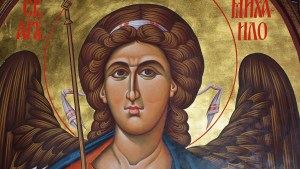Istanbul is known for its majestic architecture, spanning from the city’s foundation in 700 BC to modern times. The city, formerly named Constantinople, served as an imperial capital for almost 1,600 years, during the Byzantine Empire (from 330 to 1204), the Latin Empire (1204-1261), late Byzantine (1261-1453) and finally during the Ottoman Empire (1453-1922).
During this long and varied history, the city has been home to a diverse and multicultural population and this diversity is revealed in the city’s urban landscape. Mosques, synagogues, and churches can be found dotting the Istanbul skyline at sunset.
Istanbul’s Christian population has shrunk and Catholics represent only a fraction of the diverse community that lives in the Turkish capital. Local Catholics are usually part of the Levantine community, made up of the descendants of Europeans who settled in the Ottoman Empire.
Catholicism is kept alive by one of the most important churches of the Eastern Mediterranean, St. Anthony of Padua Church, located in the Beyoğlu district, on the European side of the city.

For centuries, the Beyoğlu district has been home to traders coming from Europe, giving rise to a multicultural and cosmopolitan community. It was here that the first European consulates opened doors in 1508. Today, it is home to some of Istanbul’s most important attractions, such as Taksim Square, Istiklal Street, and the Galata Tower.
The original Church of St. Anthony of Padua was built in 1725 by the Italian community of Istanbul and later rebuilt on the same site between 1906 and 1912. The main architect was a Levantine called Giulio Mongeri, who opted for a Venetian Neo-Gothic style. With golden mosaics, three large rose windows, and dark red bricks, the church looks as though a piece of Venice were lifted and dropped across the Mediterranean.

On top of being one of the most important places of worship for the Levantine community, St. Anthony of Padua is also famous for the role it played during World War II. It was here that the future Pope St. John XXIII, also known as the “Turkish Pope,” preached for 10 years while he was serving as the Vatican’s ambassador in Turkey. Angelo Giuseppe Roncalli was tasked with establishing diplomatic relations with Turkey after the country became a secular republic following reforms by Turkish leader Attaturk.

During his time in Turkey, the future Pope St. John XXIII served the existing European Catholic community as well as a growing Turkish Catholic community — he was the first one to introduce the Mass in Turkish. He also developed strong ties with the Ottoman and Orthodox communities. When World War II broke out, Roncalli led efforts to help Jewish people fleeing Eastern Europe for the Middle East.
Turkey was a non-aligned state, and Roncalli understood the opportunity he had to help save people that were at risk of deportation. Chaim Barlas, head of the Jewish Agency, asked Roncalli to help Jewish people coming to Turkey. Thanks to the good relationship built with Turkish authorities, he coordinated efforts with local stakeholders and the Red Cross to provide shelter and emergency help to thousands of Jewish people. Today, the street in Istanbul that hosts the Vatican Embassy is named after “the Turkish Pope.”
St. Anthony of Padua is run by Italian priests and still stands as the most important Catholic place of worship in Istanbul, offering Mass in a variety of languages, a reflection of its diverse community. Saturday Mass, at 7 p.m., is in Italian, while Sunday Mass is offered in Polish (9:30 a.m.), English (10:00 a.m.) and Turkish (5:00 p.m.).



